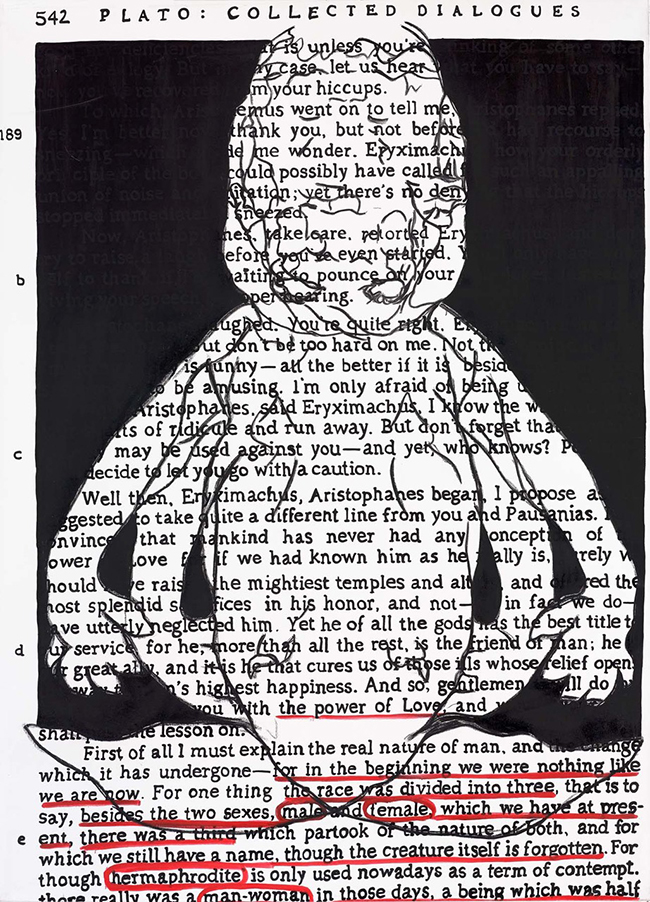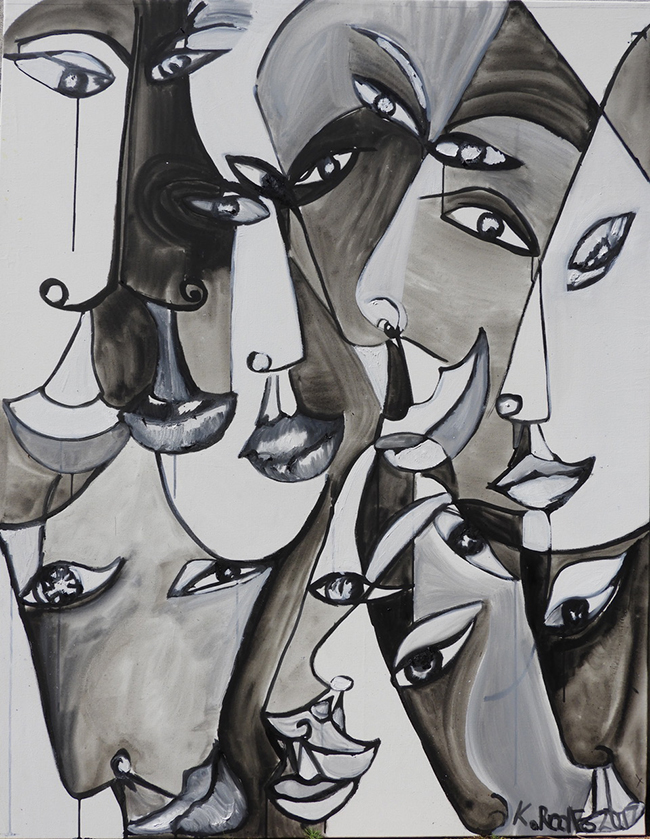Kerstin Roolfs makes paintings that don’t stay quiet. They take up space—visually, intellectually, emotionally. She works mostly in oil on canvas, and her themes aren’t light: mythology, politics, gender, deformity, history. These aren’t just decoration pieces. They’re conversation starters, challenges, and questions, all built into layers of paint. She is currently represented by Twelvechairs Gallery (https://twelvechairsgallery.com/).

Born in Germany and trained in fine art in Berlin, Roolfs made her way to New York in 1994, landing first in Williamsburg, Brooklyn, when the neighborhood was still gritty and full of raw creative energy. In 2016, she moved to the Bronx, where she continues to paint. Over the years, her work has been exhibited across the U.S., Canada, Russia, and Europe. She’s had museum exhibitions in Germany and continues to expand the reach of her practice from her studio in New York.
One of her biggest undertakings is the Global Beings series. The first work in that collection, Global Beings 1#6, is massive—almost 100 inches wide and 71 inches tall. The spark for this series came from a visit to the Charité medical museum in Berlin. There, Roolfs saw preserved infants with physical deformities, once described as “children of wonder.” It left a mark. She started reading mythology, looking into how ancient cultures treated such bodies—not as medical cases, but as signs or symbols.

At the same time, she was reading Plato’s Symposium, focusing on the part where Aristophanes tells a story about humans once being both male and female in one body—split in half by the gods, always searching for their missing part. Roolfs folds that myth into her paintings. The figures she creates are not entirely male or female. They’re in motion, fluid, stretching and flipping through space. She weaves actual text from the Symposium into the composition, so these creatures don’t just move—they read, question, react. It’s as if they’re trying to talk through the paint.
Another piece, Faces 2017, uses a different approach. This painting was made without a plan. Roolfs used the Surrealist technique of automatic drawing—just letting the hand move, letting images appear without judgment or correction. The result is a crowd of androgynous heads and shapes. They’re simplified, faceless, yet recognizable. Roolfs says these forms have shown up in her work since her early days in New York. When she lets go of control, they surface again and again.
Where Global Beings is deliberate and symbolic, Faces 2017 feels instinctive—more like a personal language she didn’t invent, but discovered. These figures aren’t ghosts. They’re markers. They come forward when words fall short.

Then there’s Women 2000, a large painting that wraps up a long-term project Roolfs calls the “Sister” series. She started it in the late ’90s, and this work represents a shift back into structure. The process was step-by-step: collage first, then ink drawing, then the oil painting. The final piece isn’t loose like Faces 2017—it’s shaped, composed, thought through. But it still keeps that emotional weight. It looks at womanhood not as a symbol but as an ongoing story, full of connection and distance at the same time.
What ties all of Roolfs’ work together isn’t a consistent style. It’s a consistent urge to dig deeper. She uses painting to ask what it means to live in a body that doesn’t fit the norm, or to carry a history that doesn’t match the present. She looks at gender as a spectrum, not a box. She doesn’t just quote old myths; she holds them up to the light and asks if they still fit.
Her studio may be quiet, but her canvases are not. They move between identities, between cultures, between ancient thought and modern reality. Roolfs doesn’t paint answers—she paints space for questions. She’s not aiming to comfort or please. She’s aiming to get under your skin, to push you into a moment where looking turns into thinking.
Her art isn’t easy. But it’s honest. It’s work that doesn’t flinch.

